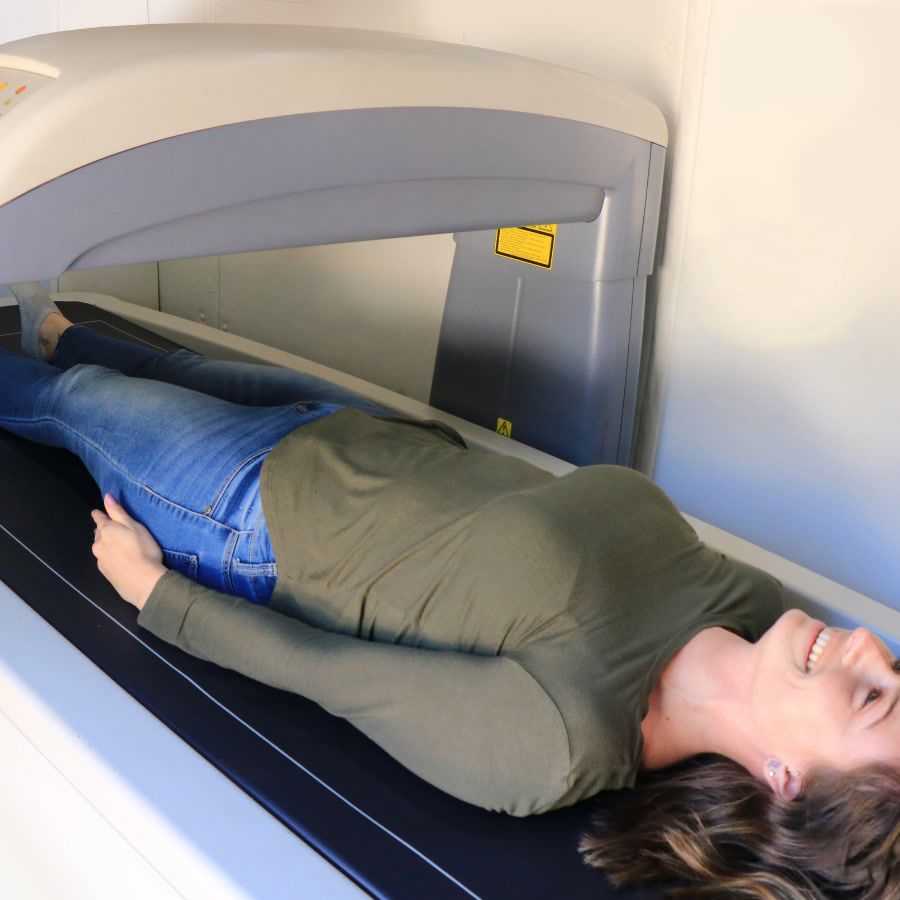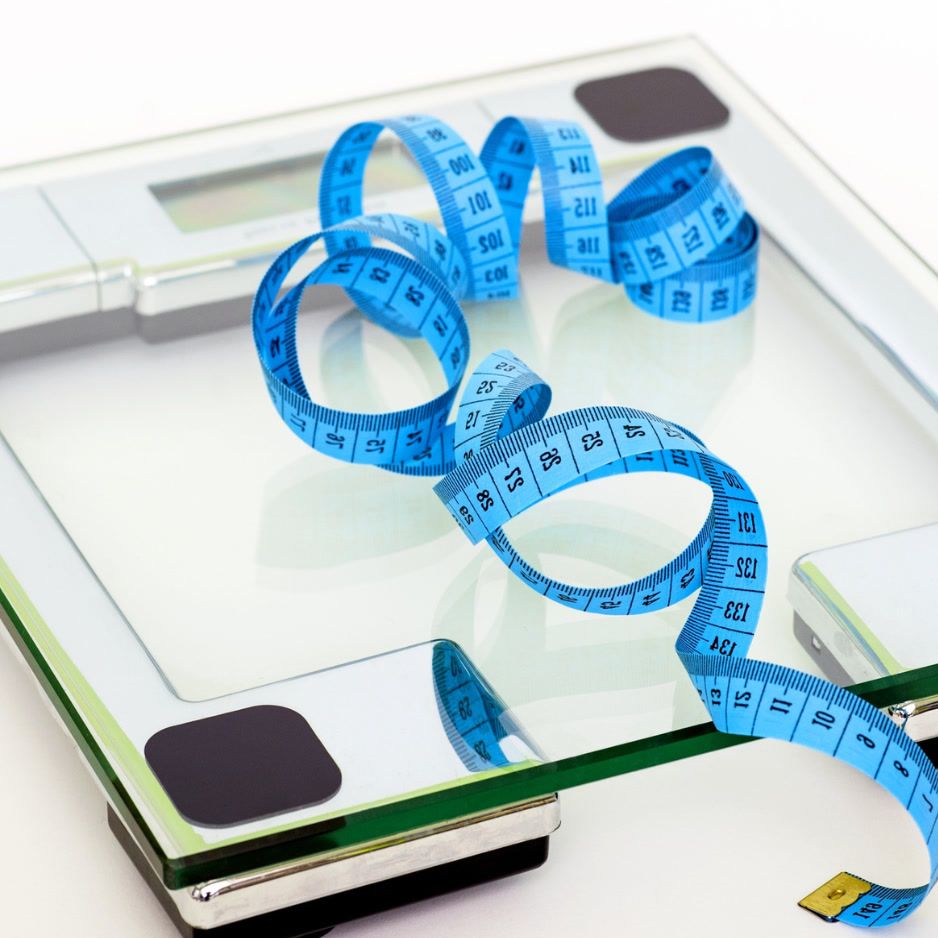12% Body Fat Male: Looks, Health & How to Get There
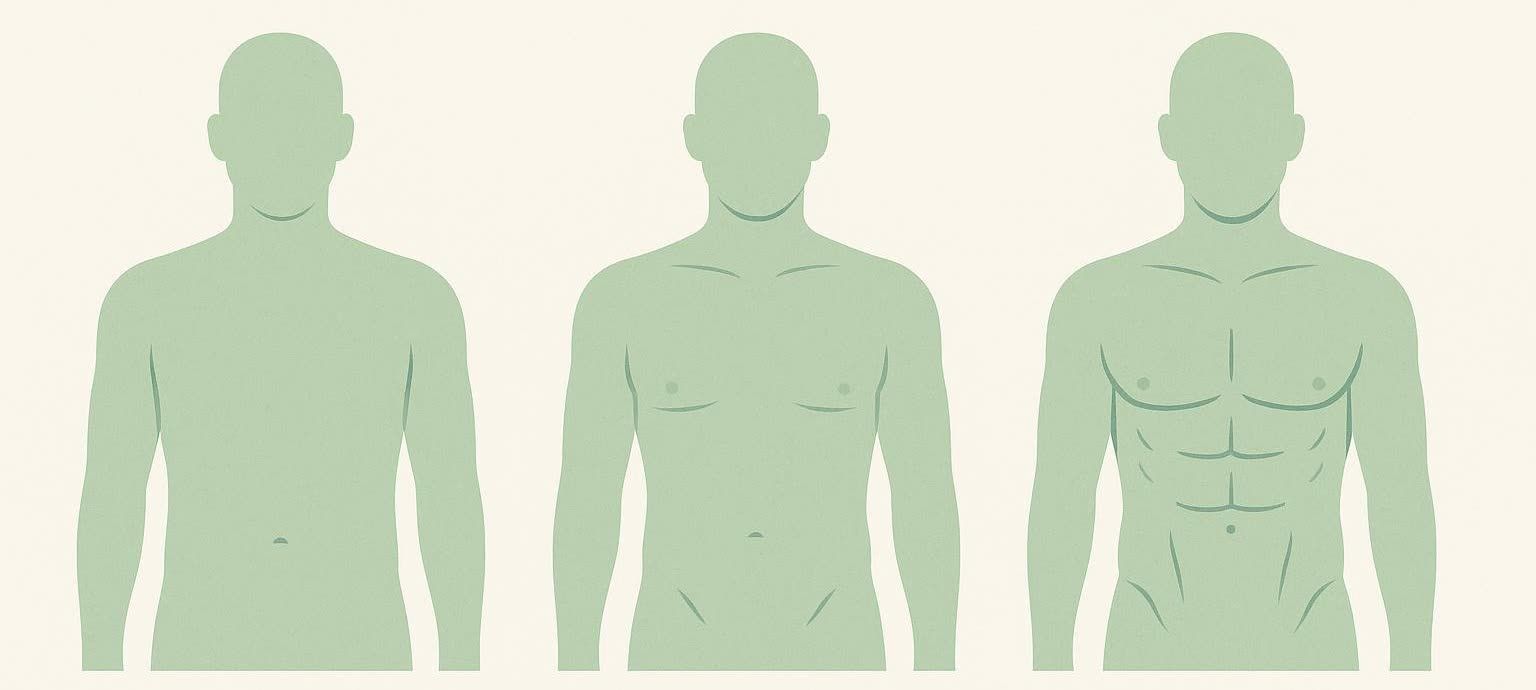
12% Body Fat Male: Looks, Health & How to Get There
TL;DR
• At ~12% body fat, most men look lean with visible upper abs and clear muscle separation, but not stage‑shredded—as outlined in the Men’s Health abs guide and RippedBody’s visual guide.
• It sits in a healthy-to-athletic range for many men and is realistic to maintain with consistent habits (see Human Kinetics norms and Harvard Health’s age-specific perspective).
• The most reliable way to confirm ~12% is a DEXA scan; consumer BIA smart scales often underestimate fat versus DEXA, according to a 2022 peer‑reviewed comparison.
• The path to 12% involves a structured plan of strength training, daily activity, and a protein‑forward diet with a modest calorie deficit, tracked with regular DEXA scans.
What 12% Body Fat Looks Like on Men
At 12% body fat, most men display a flat waist with the upper two abs typically visible and the lower abs faint but emerging, a pattern consistent with the Men’s Health overview of body‑fat ranges and ab visibility. You’ll also notice clear shoulder and arm separation, with some vascularity in forearms/shoulders under good lighting—examples shown in Ultimate Performance’s male body‑fat comparison. Overall, the look is appreciably leaner than 15% but less extreme than 10%, as the side‑by‑side photos in RippedBody’s guide illustrate.
Why two guys at “12%” can look different:
- Muscle mass: Thicker abdominal muscles yield better definition at the same percentage, a nuance highlighted in RippedBody’s guide.
- Fat distribution: Some men store less on the belly and more on the hips/legs, so abs appear sooner, as Ultimate Performance notes.

Is 12% Body Fat Healthy for Men?
Short answer: yes for most. Essential fat for men is ~3%, and 12% typically falls within the “fitness” or “athletic” categories referenced by established organizations (see Human Kinetics’ reference ranges). As you age, “healthy” ranges shift a bit higher, but maintaining a lean waist and low visceral fat remains protective, according to Harvard Health’s perspective on body‑fat by age.
Health Markers Beyond Body Fat Percentage
- Waist size: aim below ~40 in for men; keeping waist‑to‑height ratio below 0.5 is linked to better cardiometabolic risk profiles (see Harvard’s guidance).
- Visceral fat: the hidden fat around organs is the bigger health risk; DEXA can estimate VAT, a key metric you can monitor precisely.
How to Tell If You’re Actually ~12%
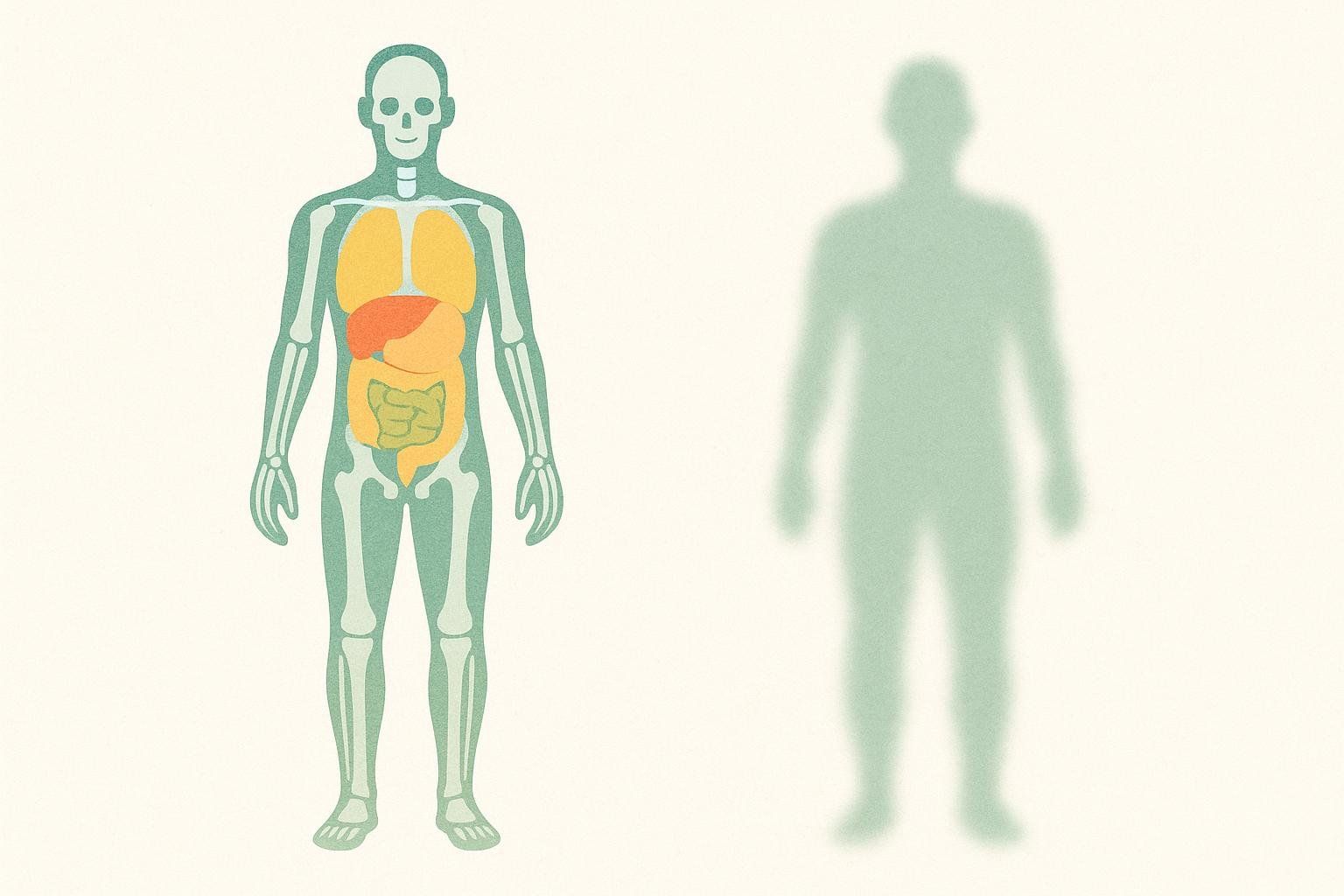
Use a gold‑standard measurement
A DEXA scan separates fat, lean, and bone, and estimates visceral fat. In peer‑reviewed comparisons, consumer BIA smart scales tend to underestimate body fat compared with DEXA, while skinfolds can drift with tester skill (2022 methods comparison). You can book a BodySpec scan and learn more in our guides to DEXA accuracy and DEXA vs. InBody.
Cross‑check visuals and tape
Sanity‑check with reputable photo guides like RippedBody’s visuals and Ultimate Performance’s comparison. Learn the correct tape protocol and aim for a waist‑to‑height ratio below 0.5, a practical marker discussed by Harvard Health).
Use a calculator for estimates (not proof)
The Navy‑style circumference method can get you in the ballpark—try our Body Fat Percentage Calculator.
Pro tip: For tracking, consistency beats perfection. Scan or measure in the same morning window, in similar clothing, with similar hydration. See Prepare for your BodySpec scan.
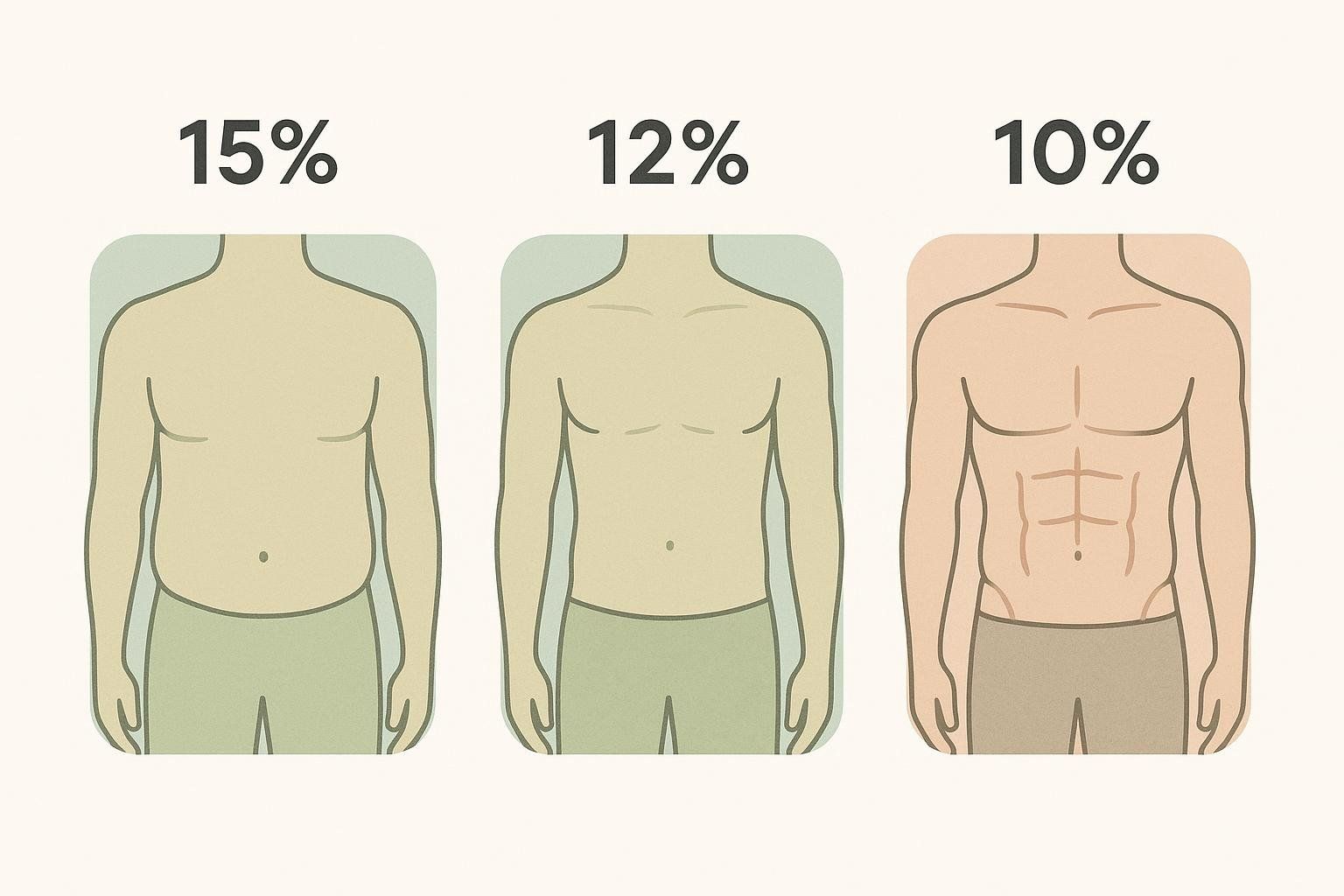
12% vs. 10% vs. 15%: The Quick Visual Ladder
| % Body Fat | What It Typically Looks Like | Notes |
|---|---|---|
| ~10% | Deep ab cuts, overall “cover model” look | Sustainable for some, but feels demanding year‑round (see UP’s 10% examples). |
| ~12% | Upper abs visible, lean limbs, solid separation | Aesthetic and maintainable for many with dialed‑in habits (see Men’s Health’s overview). |
| ~15% | Softer midsection, faint ab outline | A “healthy average” look; great jumping‑off point for a short cut (see RippedBody’s 12–15% comparisons). |
More ranges and age breakdowns: Body fat percentage chart for men.
How Long Does It Take to Reach 12%?
It depends on your start point and muscle mass. Most men do best with modest, steady changes rather than crash diets. As a directional guide:
- From ~20% → 12%: plan on multiple blocks (e.g., two 8‑week phases) with a brief maintenance week between. Many coaches recommend sustainable calorie reductions from your TDEE—about 300–500 kcal/day—alongside training (see Men’s Health’s guidance on body‑fat targets).
- From ~15% → 12%: one focused 8–10‑week block often suffices if training and protein are on point.
Use DEXA every 4–6 weeks to confirm you’re losing fat, not muscle. For a deeper dive, see Visible Abs: Diet & Workout Guide.
The 10‑Week Plan to Get to (or Dial In) 12%
This plan is designed to be simple, repeatable, and compatible with busy schedules. Follow the template below and adjust volume based on recovery and progress.
Weekly Training Template

- Strength: 3–4 sessions targeting squat, hinge, push, pull (4–6 movements/session; 3–4 sets each).
- HIIT: 1–2 short sessions (e.g., bike sprints 10×30s, 90s easy between).
- NEAT: 8–10k steps daily.
- Core hypertrophy finisher (3x/week): hanging knee raises 10–12, cable crunch 10–12, side plank 30–45s/side.
Need a step‑by‑step core/abs blueprint? See Visible Abs: Diet & Workout Guide.
Nutrition Targets (No Fads Required)
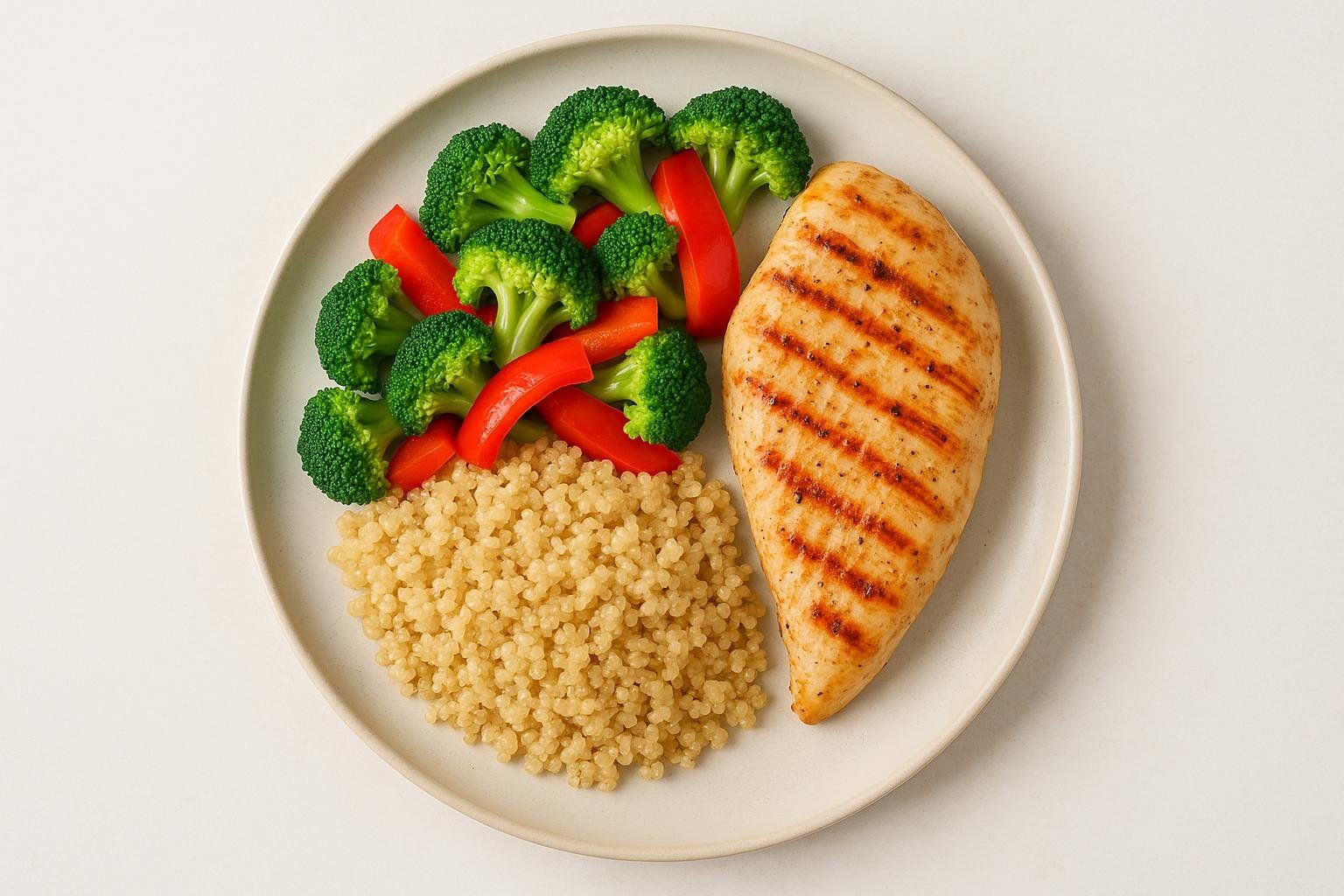
- Modest calorie gap: trim a small slice from maintenance; crash diets backfire on muscle and adherence—an approach echoed in the Men’s Health abs guide.
- Protein anchor at each meal: base every plate around a lean protein (eggs, Greek yogurt, chicken, fish, tofu) to support muscle and satiety.
- Carbs around training: place most carbs pre/post‑workout; otherwise prioritize fiber‑rich plants.
- Hydration: keep daily intake consistent; large swings can confound some at‑home tools.
For macro math and templates, use our Body Fat Calculator guide.
Sleep & Stress (Your Secret Levers)
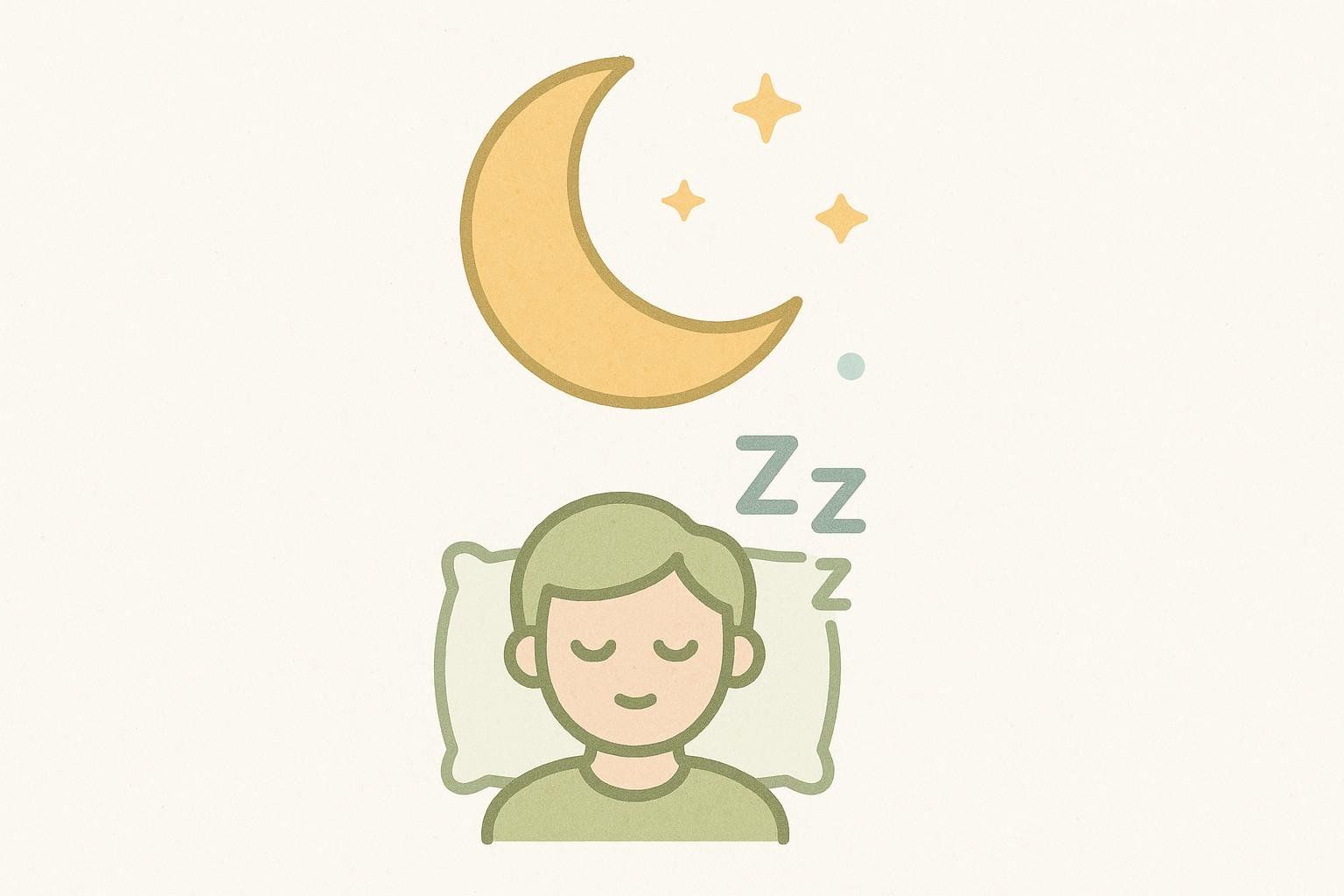
- Aim 7–9 hours with a consistent schedule. Poor sleep worsens hunger and training quality, slowing fat loss.
- Short bouts of breathwork or post‑meal walks help curb stress and support glucose control.
Milestones & Monitoring
- Week 0: Baseline DEXA + photos + waist tape.
- Weeks 3–4: Adjust calories/activity if weight or waist hasn’t budged for 14+ days.
- Weeks 4–6: DEXA check‑in; confirm fat is dropping while lean mass holds steady.
- Week 10: DEXA + photos; set next goal (maintain 12% or push to 10–11%).
Maintaining 12% Body Fat
- Reverse the deficit slowly: add ~100–150 kcal/day each week until weight is stable.
- Keep lifting 3x/week; use steps or a short HIIT session to maintain cardio fitness.
- Re‑scan every 8–12 weeks to ensure VAT stays low: Visceral fat ranges for men.
FAQs
Will I definitely see abs at 12%?
Most men see an upper‑ab outline by ~12%, but genetics and ab muscle thickness matter. If yours are faint, you may need more core hypertrophy or to reduce body fat further.
Is 12% safe long‑term?
For many men, yes. It’s within healthy/athletic bands; focus on keeping visceral fat low and energy high with adequate sleep and protein.
Best way to measure progress?
Combine DEXA with a waist tape and photos. BIA smart scales can fluctuate with hydration and may underestimate fat compared with DEXA.
Can I jump straight to 10%?
You can, but many prefer a phased approach: get to ~12% first, stabilize, then consider a shorter push. It’s easier on performance, mood, and social life.
Related BodySpec Guides
- Visuals and age charts: Body fat percentage chart for men
- How low do you need to go for visible abs? Visible Abs: Diet & Workout Guide
- Estimate at home: Body fat percentage calculator
- Accuracy matters: DEXA accuracy guide and DEXA vs InBody
- Health focus: Visceral fat range for men
Ready to confirm you’re at 12%—or map the shortest path there? Book a fast, low‑dose BodySpec DEXA scan and get precise fat, muscle, bone, and visceral‑fat data in minutes.
